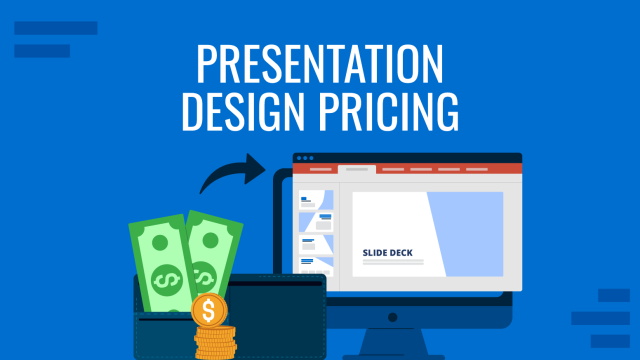
One of the first things you learn at an economics course is that you should never take irrecoverable (sunk) costs into account when you need to decide upon present or future investments. But since humans are not the most rational beings, we often forget that basic rule and let the past “investment” distort our judgments. This cognitive tendency is known as “sunk cost fallacy” and it can massively undermine both your personal and business decision-making.
What Is a Sunk Cost Fallacy?
Let’s unpack the name first.
Here’s how you can define fallacy – faulty reasoning or mistaken belief, based on flawed arguments.
A sunk cost is an economic term referring to an incurred expense that can no longer be recovered. Most business models assume that you first need to spend some cash in order to make some. In other words, you incur certain sunk costs when you are launching a new product or an entirely new company.

Some examples of sunk cost may include equipment purchases, website development or office lease payments. Quoting Roy Bennett “What’s done is done. What’s gone is gone.” There’s no reasonable way for your business to recuperate the sunk costs. That’s why most leaders attempt to exclude them from future business decisions unless they fall prey to the sunk cost fallacy bias.
In 1985, two behavioral economics researchers Arkes & Blumer ran a field study showing how people’s decision-making varies depending on how much time and resources they have already invested in the matter.
They described the sunk cost effect as one that “is manifested in a greater tendency to continue an endeavor once an investment in money, effort, or time has been made”. In simpler terms, we like to “get our money’s worth” out of every investment we make, even if doing so is highly unreasonable.
Quick Sunk Cost Fallacy Examples
Kahneman and Tversky, another duo of behavioral economists, did a quick social experiment in the late 80s. They asked two groups of people what they’ll do if:
- You come to a movie theater, open their wallet to buy a $10 ticket, but realize that you’ve just lost a $10 bill somewhere. Only 12% of participants said they won’t buy a ticket in this case. The majority wouldn’t bother too much.
- Or you already purchased a $10 ticket, but as you head to enter the theater, you realize that you’ve just lost it somewhere. Will you go on and buy a new one? 54% of respondents said they would not.
From a financial standpoint, the two situations are the same. You’ve just lost ten bucks either as a bill or a ticket. Psychologically, however, we are sadder when we lose something we’ve paid for. This is called loss aversion – we’d rather not lose $10 than find an extra $10. Loss aversion is one of the underpinning components of sunken cost bias.

Money Word Cloud Picture for PowerPoint by SlideModel
Here are several more examples you can probably relate to:
- Breaking off long-term relationships is much harder than short-term ones.
- You won’t rush to throw away an expensive suit you’ve worn just once even if it no longer fits you well.
- It’s hard to abandon an online game where you already achieved high rankings and can lose it if you don’t log in regularly.
All of the above are examples of sunk cost fallacy psychology that forces us to act irrational – maintain a relationship, keep the suit or continue playing an addictive game. Sunk cost fallacy can be further reinforced by emotional fallacy as we tend to over-rely on emotions rather than logic when forced to give up on something.
Christopher Olivola, an assistant professor of marketing at Carnegie Mellon’s Tepper School of Business, writes in his paper that sunk costs fallacy has a toxic pull over us because: “[we] attempt to correct cognitive dissonance: the mental disconnect between paying for something and not getting the expected return on investment”. Also, we remain vested in bad decisions to avoid regrets or as an attempt to convince ourselves (and others) that we’re not wasteful.
How The Fallacy of Sunk Costs Can Jeopardize Your Business
Business decision making based on sunk costs can lead to poor consequences. For instance, you may be tempted to hold on to legacy software and hardware instead of digitally transforming your business because you have already invested so much in it. Or you are not keen on changing your business model as that would mean abandoning past processes, letting go of some well-oiled practices and perhaps even firing some people.
However, succumbing to sunk cost fallacy in such cases means that you can lose your business altogether. Garter predicts that 80% of heritage financial institutions can go out of business or exist only formally without actually competing for customers unless they digitize and innovate. It’s safe to assume that some of the board members within these institutions are not keen on innovation, in particular, due to being caught in the sunk cost trap.
Recommended template: Innovation Ambition Matrix Diagram.
Arguably the biggest sunk cost fallacy up to date was the Concorde project, jointly funded by the French and British governments. Despite numerous setbacks and failures, the country’s leaders kept pouring money into this plane for nearly three decades despite the fact that everyone else viewed it as a commercial failure.

Ultimately, the sunk cost fallacy can push executives towards making business decisions that are driven by fear of loss, rather than enthusiasm for what’s ahead. And this tendency further extends into the workplace practices. Several other examples of sunk cost fallacy workplace culture include:
- Managerial reluctance to invest in new technologies, software or equipment upgrades.
- Lack of investment in ongoing staff training or professional development.
- Rewarding employees for showing up, rather than delivering results.
- Reluctance to explore new business markets or trying new business models.
In the long run, all of the above sabotages your company’s growth.
How to Overcome Sunk Cost Fallacy
The first step towards battling this bias is learning to recognize it immediately in your decision-making and helping your teams do the same. Below are several actionable tips that should help you with that.
1. Treat Any Investment as an Option, Not an Obligation
When sunk cost fallacy drives the decision making in management, the company feels obliged to act upon every investment they made (good or bad). This investment fallacy can quickly build up and lead to the fact that money gets burned on a project that’s bringing no good returns. Pivoting from an endeavour takes strength and courage. But it’s always better to admit and recognize failure early on than maintain a face and later unravel far worse consequences.
Thus, remember this: just because you have already spent money on something, does not oblige you to take advantage of what we received. Treat every investment as an option – to experiment with a new product, test a new marker, etc. – rather than an obligation to make that investment work no matter what i.e. keep burning money on further product enhancements if it flopped in the target market.
2. Minimize The Impact of Short-Term Emotions
One study suggests that as much as 83% of corporate mergers and acquisitions failed to generate any tangible value for stakeholders. The reason? A number of those decisions were driven by short-term emotions and pressure experienced by the company’s leaders.
Sunk cost fallacy is largely emotion-driven because we feel regret for wasting time on something or don’t want to appear wasteful or admit failure. That’s why when faced with a big decision it’s important to get some distance first, instead of diving into action.
Specifically, run a quick root cause analysis in your head to understand why you are feeling in one way or another and what underpins your emotion to act in a certain way.

The 5 Why’s PowerPoint Template by SlideModel.
3. Base All Major Decisions on Data, Not Judgements
Good decision making in management is based on solid data and collaborative input, rather than “gut feeling” and individual judgments. However, fostering this culture of cumulative input can be tough if your teams are used to succumbing to the so-called HiPPO (highest paid person’s opinion) effect. In this case, instead of using their own judgment and data to decide upon the right course of action, the team defers to the HiPPO’s opinion. Once the HiPPO voices out their judgment, few people will speak out to object to it even if it’s completely wrong.
To best way to avoid any fallacies resulting from this effect is to base your decisions on data. When it comes to sunk cost fallacy, in particular, the best way to do so is to run a quick analysis that will capture:
- Your current investments
- ROI achieved so far
- Future opportunities cost
- Future profitability (if any)
Doing so will help you recognize a doomed project early on and attempt to make the most out of your current situation.
Recommended template: Decision Tree Diagram for PowerPoint
4. Keep The Focus on The Big Picture
Losing money today does not mean that you won’t recover them later on. For instance, you have invested $15,000 in a professional market segmentation research and realized that your product will not perform well with the target audience. You have incurred a sunk cost, however, running that research has actually saved you more in the long term as you waste resources on targeting people who are just not interested.
Instead of focusing too much on what you’ve just lost, treat each sunk cost as a “learning experience”. Remind yourself of why you’ve made that particular decision, what it had lead to so far, and how it had made an impact on your future plans. By doing so repeatedly, you can avoid sunk fallacy thinking that shifts your focus towards the past.
Conclusion
Sunk costs are inevitable in any business. Being a good decision-maker isn’t about completely avoiding them, but understanding why they happened and what’s the best way to move forward. Whenever it’s not obvious whether you should throw a towel to cut off the losses and or keep moving forward to save the loss, don’t rely on your personal judgments alone. Run a financial analysis or an after-action review to clearly understand where you stand right now and what can you do to recuperate that loss in the nearest future.


